
Busca tu ebook....

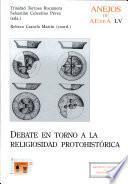
Debate en torno a la religiosidad protohistórica
Autor: Sebastián Celestino Pérez
Número de Páginas: 316Los dos grandes bloques cronológicos de la Protohistoria, I y II Edad del Hierro, distan mucho de presentar problemas, metodologías y avances similares. Además, existe cierta descompensación entre el conocimiento que existe de la religiosidad en la I Edad del Hierro, de la que se conocen cada vez mejor los edificios destinados al culto, los ritos, las divinidades, los altares o los materiales destinados a la liturgia, y el conocimiento existente de la religiosidad en la II Edad del Hierro. En consecuencia, la presente monografía pretende reunir los trabajos más novedosos, así como una serie de síntesis sobre estudios anteriores, que ayuden a entender mejor la religiosidad durante ambos bloques cronológicos de la Protohistoria en el sur de la Península Ibérica, contrastando las raíces indígenas con las que tienen su origen en el ámbito del Mediterráneo, de fuerte impacto en la cultura tartésica e ibérica.
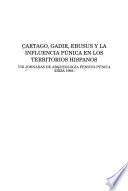
Cartago, Gadir, Ebusus y la influencia púnica en los territorios hispanos
Autor: Museo Arqueológico De Ibiza
Número de Páginas: 174
SPAL
Número de Páginas: 318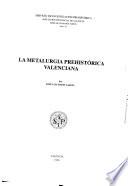
Serie de trabajos varios
Número de Páginas: 444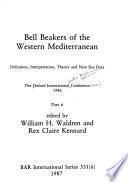
Bell Beakers of the Western Mediterranean
Autor: William H. Waldren , Rex Claire Kennard
Número de Páginas: 742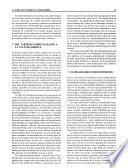
Saguntum
Número de Páginas: 453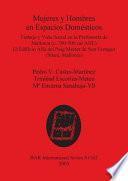
Mujeres y hombres en espacios domèsticos
Autor: Pedro V. Castro Martínez , Trinidad Escoriza Mateu , María Encarna Sanahuja Yll
Número de Páginas: 532Detailed investigation of the Alpha Building of Puig Morter in Son Ferragut on the island of Mallorca provided the opportunity to study not only a domestic setting dating to between c.700 and 500 BC, but also to build a picture of different social activities and gender relations during this period.
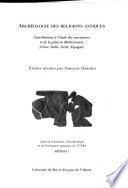
Archéologie des religions antiques
Autor: François Quantin
Número de Páginas: 188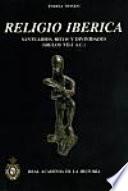
Religio iberica
Autor: Teresa Moneo
Número de Páginas: 584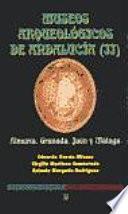
Museos arqueológicos de Andalucía
Autor: Eduardo García Alfonso , Virgilio Martínez Enamorado , Antonio Morgado Rodríguez
Número de Páginas: 484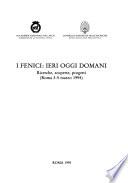
I Fenici--ieri, oggi, domani
Número de Páginas: 588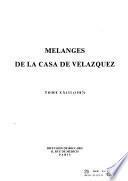
Mélanges de la Casa de Velázquez
Autor: Casa De Velázquez
Número de Páginas: 564Content of t. 1-32 covers history of Spain and Spanish in Latin America. Beginning with t. 33-1 (2003) content covers history of any Spanish colony.
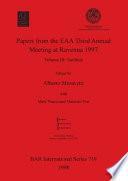
Papers from the EAA Third Annual Meeting at Ravenna 1997: Sardinia
Autor: European Association Of Archaeologists. Annual Meeting
Número de Páginas: 172A large number of the contributors to the Ravenna (1997) meeting of the European Association of Archaeologists spoke about the explosion of research interest and new discoveries on the island of Sardinia. This book groups their papers together, providing a useful snapshot of current work.
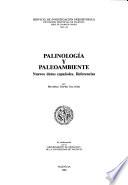
Palinología y paleoambiente
Autor: Michèle Dupré Ollivier
Número de Páginas: 192
Son Real
Autor: Miquel Tarradell , Jordi Hernández Gasch
Número de Páginas: 221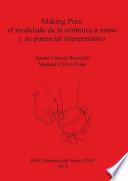
Making pots
Autor: Jaume García Rosselló , Manuel Calvo Trias
Número de Páginas: 0This book analyses the technological process of ceramic moulding. To this end, the work is organised into four sections: The first section discusses the concepts on which the analyses are based. The second section analyses the theoretical-methodological background. This section is based on a social view of the operational chain and on a specific design adapted to the technological interpretation of the macro-traces created by the ceramic moulding process. The third section discusses the entire protocol for the technological identification of macro-traces created by the ceramic moulding process. The final section deepens the interpretative strategies offered by the ceramic moulding analysis and the volume concludes with a reflection on the limits and possibilities of the proposed methodology.
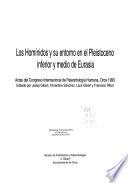
Hominids and their environment during the lower and middle Pleistocene or Eurasia
Autor: Josep Gibert , Gibert Clols Gibert
Número de Páginas: 672Opciones de Descarga
Últimos libros y autores buscados
Libros reeditados
- Historia Mínima De La Guerra Civil Española - Enrique Moradiellos
- Las Monarquías Española Y Francesa (siglos XVI-XVIII) - Collectif
- Historias De Osos. Cuentos Para Contar - Montserrat Del Amo
- La Casa De Los Espíritus - Isabel Allende
- Orígenes Y Desarrollo De La Guerra Santa En La Península Ibérica - Collectif
- Cámara De Eco - Gustavo Guerrero
- Camila Vallejo Símbolo De La Juventud Ingnada (Magis 428) - Édgar Velasco
- Déjame Amarte. Los Hermanos Montgomery - Moruena Estríngana
- El Derecho Concursal En España - Aurelio Gurrea Martínez
- Educación, Comunicación Y Salud - Josep M. Comelles